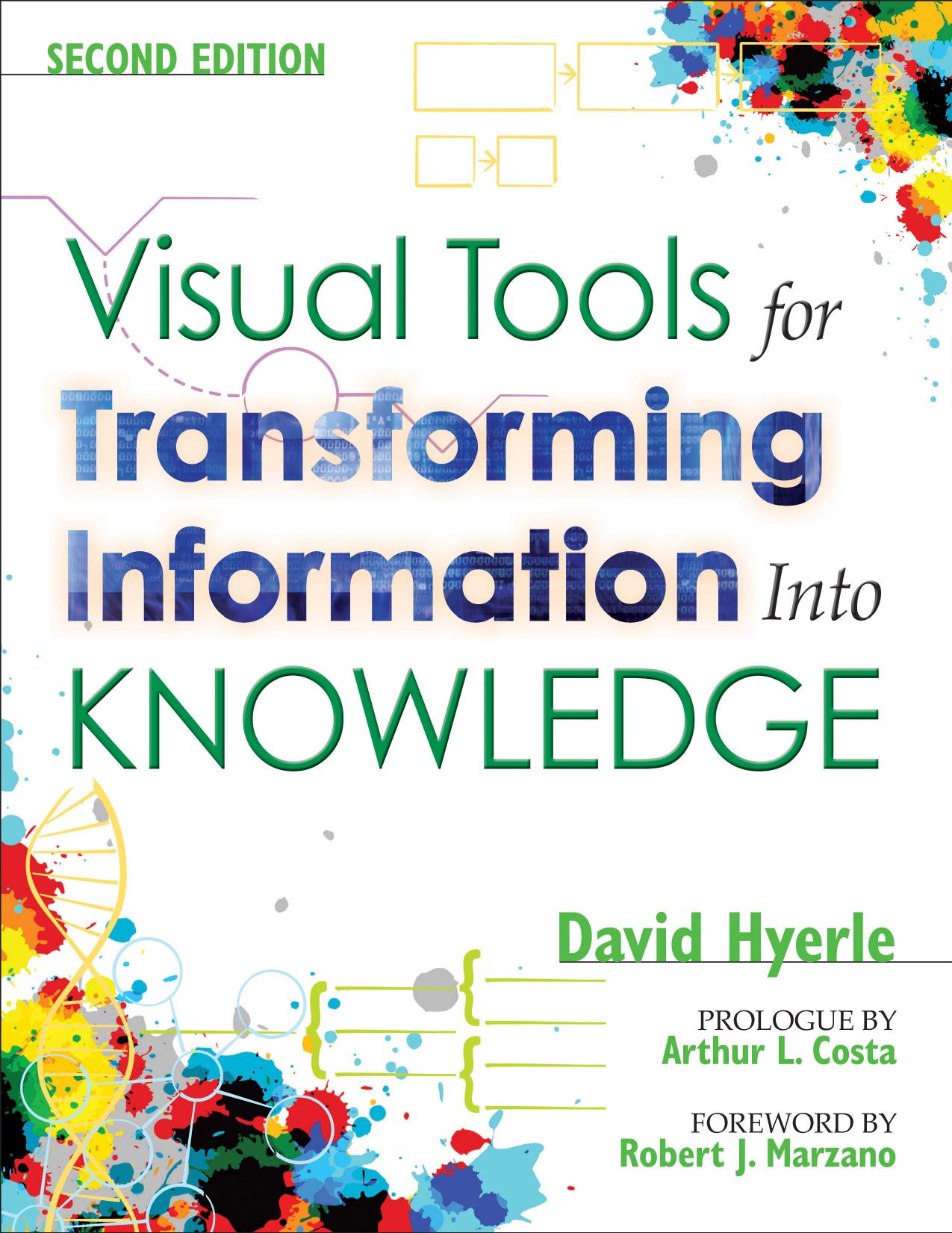Visual Tools for Transforming Information Into Knowledge by David N. Hyerle

Author:David N. Hyerle [Hyerle]
Language: eng
Format: epub, pdf
ISBN: 978-1-4522-9324-0
Publisher: SAGE Publications
Published: 2008-09-04T16:00:00+00:00
Source: K. Bromley, L. Irwin-De Vitis, & M. Modlo. (1995). Graphic organizers. New York: Scholastic.
This view resonates with the need for students to move toward higher-order thinking as independent learners. In terms of Benjamin Bloom’s Taxonomy of Educational Objectives (see Bloom’s revised taxonomy in Anderson et al., 2001), the cognitive capacities to analyze and synthesize information (organize, break down, and reformulate) are the steps toward evaluative thinking. Yet even the lowest level of Bloom’s taxonomy—knowledge—is defined as the basic organization of content. It is no wonder, then, that most students have difficulty with complex tasks. They have the intellectual capacity but do not have the intellectual tools for constructing, patterning, and reforming information into meaningful, organized knowledge. Importantly, even the most basic level of organization of information is inherently conceptual. Unfortunately, retention of isolated content knowledge by rote memorization is over emphasized in classrooms instead of retention through the development of organizational designs and conceptual understandings. The general processes of organizing information require that learners go well beyond the retention of isolated bits of information. Students must have the know-how to analytically construct interrelationships so they can evaluate knowledge. This process takes mental energy, perseverance, and much more: it also takes the support of focused linear and nonlinear organizational tools that reflect different content-specific patterns of knowledge and conceptual structures.
In this chapter, we investigate a wide range of graphic organizers and their uses, from useful starting points, or templates, to more “dynamic graphics.” Graphic organizers begin with a relatively clear structure on a page or in the mind and are expanded according to the established pattern. This different type of visual tool thus becomes a focal point for facilitating a different array of habits of mind.
Download
Visual Tools for Transforming Information Into Knowledge by David N. Hyerle.pdf
This site does not store any files on its server. We only index and link to content provided by other sites. Please contact the content providers to delete copyright contents if any and email us, we'll remove relevant links or contents immediately.
The Art of Coaching Workbook by Elena Aguilar(49704)
Trainspotting by Irvine Welsh(20720)
Twilight of the Idols With the Antichrist and Ecce Homo by Friedrich Nietzsche(18113)
Fangirl by Rainbow Rowell(8481)
Periodization Training for Sports by Tudor Bompa(7714)
Change Your Questions, Change Your Life by Marilee Adams(7135)
This Is How You Lose Her by Junot Diaz(6236)
Grit by Angela Duckworth(5097)
Asking the Right Questions: A Guide to Critical Thinking by M. Neil Browne & Stuart M. Keeley(5087)
Red Sparrow by Jason Matthews(5010)
Paper Towns by Green John(4567)
Room 212 by Kate Stewart(4499)
Ken Follett - World without end by Ken Follett(4273)
The Sports Rules Book by Human Kinetics(3892)
Housekeeping by Marilynne Robinson(3849)
Papillon (English) by Henri Charrière(3653)
Double Down (Diary of a Wimpy Kid Book 11) by Jeff Kinney(3617)
The Motorcycle Diaries by Ernesto Che Guevara(3617)
Exercise Technique Manual for Resistance Training by National Strength & Conditioning Association(3598)
